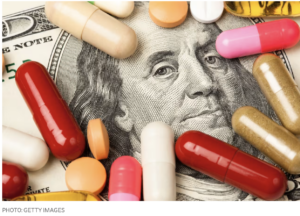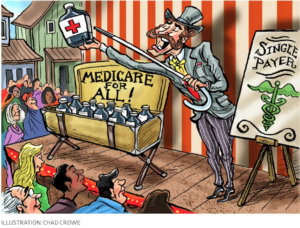
People are having knee and hip joint replacements at younger ages. In the past, doctors usually recommended putting off joint replacement surgery until patients were in their sixties or seventies, but that seems to be changing.
Alex Janin, writing in The Wall Street Journal, tells us the average life expectancy is ticking up and the average age of joint replacement surgery is going down. He says many Americans are no longer willing to sacrifice decades doing their favorite activities, such as skiing, hiking or playing pickleball, to sit in pain, according to doctors.
Certain intense, high-impact fitness activities can increase the chances of injury and arthritis—leading to more procedures. “In the past, people would just say, ‘I don’t run, I have bad knees,’” says Dr. Ran Schwarzkopf, an orthopedic surgeon at NYU Langone. Now, he says, “they’re not willing to accept limitations that arthritis gives.”
The other reason younger people are getting replacements is the growing prevalence of obesity in the U.S. More than 40% of U.S. adults have obesity, the Centers for Disease Control and Prevention says, up from roughly 30% in 1999. Excess weight puts more pressure on the joints—roughly 4 pounds for each additional pound of body weight—leading more patients to need replacements earlier in life.
For patients ages 45 to 64, there was a 211% increase in inpatient hip replacements and a 240% increase in inpatient knee replacements between 2000 and 2017, according to data from the U.S. Department of Health and Human Services’s Agency for Healthcare Research and Quality. (Records after 2017 are less accurate due to changes in Medicare coding.) There was also an increase in joint replacements for patients ages 65 to 84, but the rise wasn’t as steep.
This tracking doesn’t include the growing share of replacements that are outpatient surgeries, which allow patients to go home the same day as their procedure. More than a million hip and knee replacement surgeries are performed in the U.S. every year.
“Back in the day, patients were told they had to wait until they were 70 or 80 to undergo this procedure because implants did not last long enough,” says Dr. Antonia Chen, an orthopedic surgeon at Brigham and Women’s Hospital. “Now, implants last 20, 25 or 30 years, and quality of life means a lot more.” Chen estimates that patients under 65 account for roughly 50% of her practice now, up from roughly 30% in 2014.
All this sounds great but there is another side to this story. Many surgeons still recommend minimizing or altogether avoiding running and other high-impact exercises after surgery, because it can put extra pressure on the prosthetics. Our joints are like tires; the more weight the tire carries, the quicker it wears out. These procedures are largely elective, and surgeons caution they still shouldn’t be considered preventive. They carry risks including infection, dislocation or joint instability.
As an orthopedic surgeon myself, I can tell you it’s more complicated than it seems. I once performed a total knee replacement on a 33-year-old man, but he would have been in a wheelchair otherwise. I wasn’t trying to get him back to running marathons! Anyone can undergo a total joint replacement at an early age and improve their level of function. But the real test is how long before you have to repeat that procedure because the artificial joint has worn out, or more commonly, has become loose.
If a person in their forties has a knee or hip replacement, and lives a normal life expectancy, it is almost guaranteed they will have to have that joint replaced a second, or even a third time. And if obesity is their problem, those repeat joint replacements will happen even more frequently. While this is certainly possible, the incidence of complications with repeat replacements goes up significantly. I doubt the surgeons doing many procedures in patients under the age of sixty-five are being fully candid about the drawbacks of repeat total joint replacements. No improvements in the materials used or the surgical techniques employed can change that reality.



